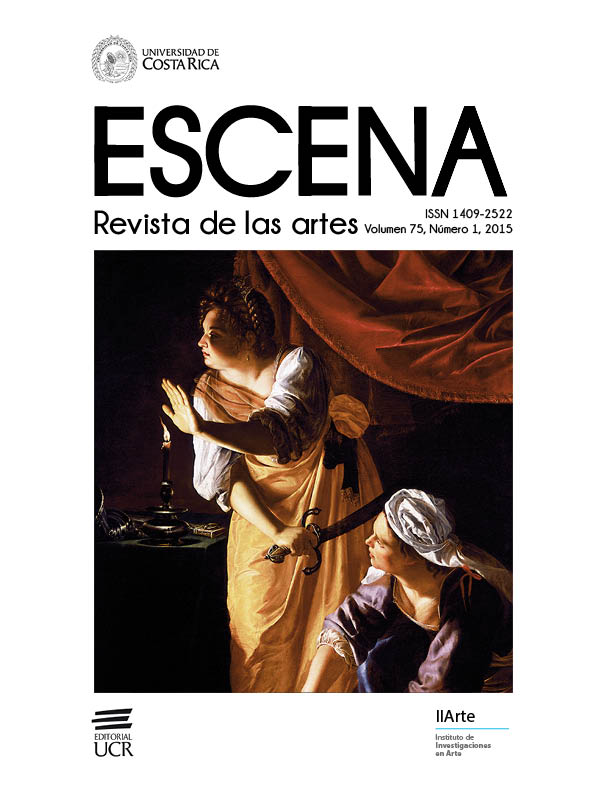Abstract
This paper proposes an analysis of the reception of La Chunga. A modern opera, by the composerCarlos J. Castro, based on a play by Mario Vargas Llosa. The opera was released in Costa Rica in 1995, accompanied by an absolute “silence” by the critics. This “opera” embodies a sound and bio-political landscape. Performativity is an architecture, unique in the elected bodies, especially in that of Guadalupe Urbina. A Cultural icon by her own right.
The bodies chosen to “represent” the opera are “accomplices”. Only the score, the videotape and some photographs or notes on the work have survived. From them, an effort was made to glimpse that “locus-abyss” to which we are invited by Vargas Llosa and Carlos J. Castro, but not as a play or as an opera. This essay takes the risk of thinking of them as an abyss, gushing from a radio station that in their tropical music, pop-rock and romantic ballads, places the beings in a decrepit bar, where the “covenant” can be real, and where the bodies are, indeed, exchangeable meat and decadence.
References
Angulo Ruiz, M. (2007, 24 de junio). La joya del “Pequeño París”. Al Día. Recuperado de http://wvw.aldia.cr/ad_ee/2007/junio24/nacionales1143872.html (consultado el 30 de mayo de 2015).
Campos Fonseca, S. (2013). Eliane Elias: “Fallen Diva”: musicar una corpografía. Estudos de gênero, corpo e música: abordagens metodológica, 3, pp. 233-275.
Contreras-Castro, A. (2011).Abya Yala, o la estrategia de Desnudarse. En Teatro Abya Ayala Costa Rica 1991-2011 (pp. 6-9) (Catálogo). San José: Editorial Arlekín.
Cazali, R. (2014, 7 de diciembre). Rosina Cazali Mi época mi bestia. El Periódico
Guatemala. Recuperado de http://www.elperiodico.com.gt/es/20141207/elacordeon/5884/Rosina-Cazali-%E2%80%9CMi-%C3%A9poca-mi-bestia%E2%80%9D.htm (consultado el 30 de mayo de 2015).
Ortiz, I. (2014) .La composición de óperas en Costa Rica a partir de 1950. Revista Estudios, (28), pp.1-19.
Rivera-Rodas, O. (1992). El metateatro y la dramática de Vargas Llosa. Hacia una poética del espectador. Philadelphia, PA: John Benjamins Publishing (Purdue University monographs in Romance languages).
Stevenson, D. (2013). The City. Cambridge (UK): Polity Press.
Vargas Cullell, M. C. (2008, 10 de febrero). Cómo tuvimos música nacional. 80 años Una singular historia hizo el ritmo de Costa Rica al punto guanacasteco. La Nación (Suplemento Áncora). Recuperado de http://wvw.nacion.com/ancora/2008/febrero/10/ancora1411556.html (consultado el 30 de mayo de 2015).


